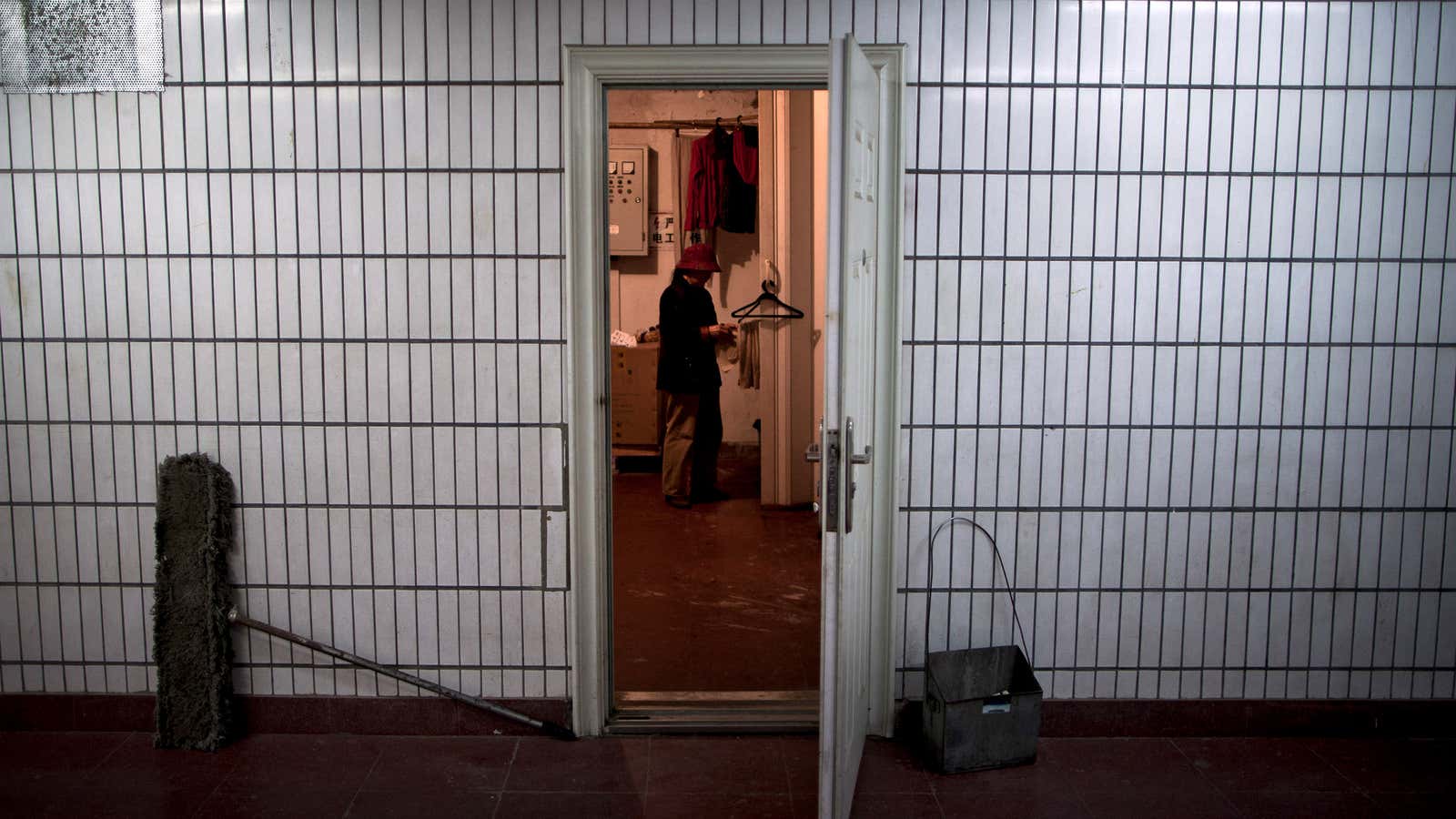The numbers are undeniably mind-boggling: An estimated two million people in Beijing are said to be living below the earth’s surface, in thousands of 100-square-foot spaces located just one or two stories below street level. These figures have been making headlines (and trending upwards) for a couple of years now. Assuming they’re accurate, that would mean 10 percent of the city’s 20 million people sleep in windowless, subterranean residences.
That they are there speaks to the crushingly expensive housing market in China’s bulging top-tier cities. The makeshift conversion of approximately 20,000 antiquated bomb shelters and basements across Beijing has also no doubt led to a rise in dangerous living conditions: it’s common to find multiple people sharing these small emergency shelters made only slightly more hospitable with space heaters and hot plates.
The only affordable alternative would be way out on the city’s periphery. And yet, if you ask them, many of these people, most of them migrant workers, will tell you their choice to live underground is vastly better than the alternative.
“The plus side for them of living underground was, of course, better economic opportunities,” says Annette M. Kim, associate professor of urban planning at the Massachusetts Institute of Technology. “They had multiple jobs in the vicinity, and they didn’t have enough time to travel far.” The only affordable alternative for most migrant workers in Beijing, Kim says, would be way out on the city’s periphery – beyond the Sixth Ring Road – where the combination of distance and poor transit access creates hours-long commutes.
Kim and her team have gleaned these preliminary findings from extensive interviews with about 20 underground Beijing residents. Of the subterranean residents they’ve talked with so far, there are waiters, maids, cooks, salespeople, deliverymen, vendors, construction workers, and security guards. Tenancy in these underground units ranged from just a few days to more than eight years.
They’ve also been collecting more concrete data from classified ads for this unique class of housing. Based on an analysis of more than 600 ads posted to the website Ganji.com, the median monthly rent for one of these units is about $64.
“Of course there’s a sampling bias with these online ads,” Kim says. “I think they’re going to be on the slightly higher end of the bomb shelter market.”
This ad from Ganji.com offers a 10-square-meter room in the basement of a building just outside the 3rd Ring Road for 240 yuan a month, or about $39.
A holdover of Cold War anxieties, bomb shelters are still required by Beijing’s official building code. In the 1990s, the city enacted a policy to open up these spaces for use. But the government has since grown weary of the underground dwellings. In August 2010, the city stopped granting new use permits for these spaces and has a three-year plan to move all the subterranean residents. Kim says many, if not most, remain for now. But the policy raises some questions about the accuracy of the city’s tally of underground residents, which may be inflated to justify evictions.
Kim is planning to go back to do more field research this summer to get a better idea of how extensive this lifestyle really is and how the underground dwelling market functions. She hopes to gather more data on transportation access and to look at the relationship between the above- and below-ground local real estate. If indeed there are two million people living underground in Beijing, Kim thinks there may be a way to make this housing stock work better. Or maybe it’s fine as it is, providing exactly what this growing class of migrant workers needs at the right price and location.
“I’m still grappling with how to understand it,” she says.
